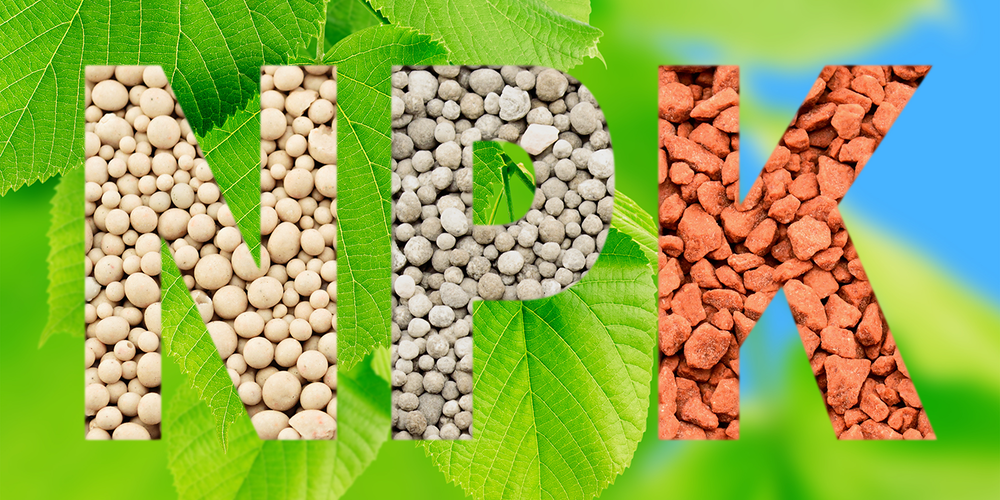When looking for a fertilizer to use for a new grow or to incorporate into existing soil, you’ll probably notice three numbers prominently displayed on most bags. These numbers represent the three major macronutrients that all plants need to perform at their best potential. These nutrients are nitrogen(N), phosphorus(P), and potassium(K), and the number values indicate the ratio of each one in the mix.
Let’s take a look at how these three nutrients affect the way plants grow.
Nitrogen
Nitrogen is one of the most basic elements that plants need to grow and produce chlorophyll, which is responsible for the plants' green color. Nitrogen is one of the most critical nutrients for a plant when it is newly planted and all its energy is spent on growing leaves and stems.
Phosphorus
Phosphorus is essential for photosynthesis, and helps with the rapid growth young plants are going through as well as helping to increase resistance against common plant diseases along with stimulating root development. Phosphorus is needed throughout the grow cycle, from seed to harvest, though plants tend to show a bigger uptake when they’re getting ready to flower.
Potassium
Potassium is second only to nitrogen in terms of its necessity to growth and health for a plant, and a deficiency will result in slowed growth, weak roots, and premature defoliation. If you’re growing fruit, a shortage of potassium will result in uneven ripening and a lower yield than expected.
By the Numbers
A vegetative state fertilizer like Geoflora VEG is excellent to use when starting a new crop or transplanting seedlings; it contains diverse nitrogen sources and has been formulated specifically for use with young growth.
Geoflora BLOOM has a higher concentration of phosphorus than VEG does, and when it’s time for your crop to start flowering, switching over to BLOOM is a good choice for larger buds and an abundant harvest. Geoflora BLOOM kicks up the potassium in preparation for harvest as well as containing a charge of beneficial bacteria to make sure your crop won’t be wanting when it comes to harvest time.
This is just a basic breakdown of the importance of NPK in plants, but it should be enough to get you going. Now you'll know what those numbers on the package mean and why they're important.



